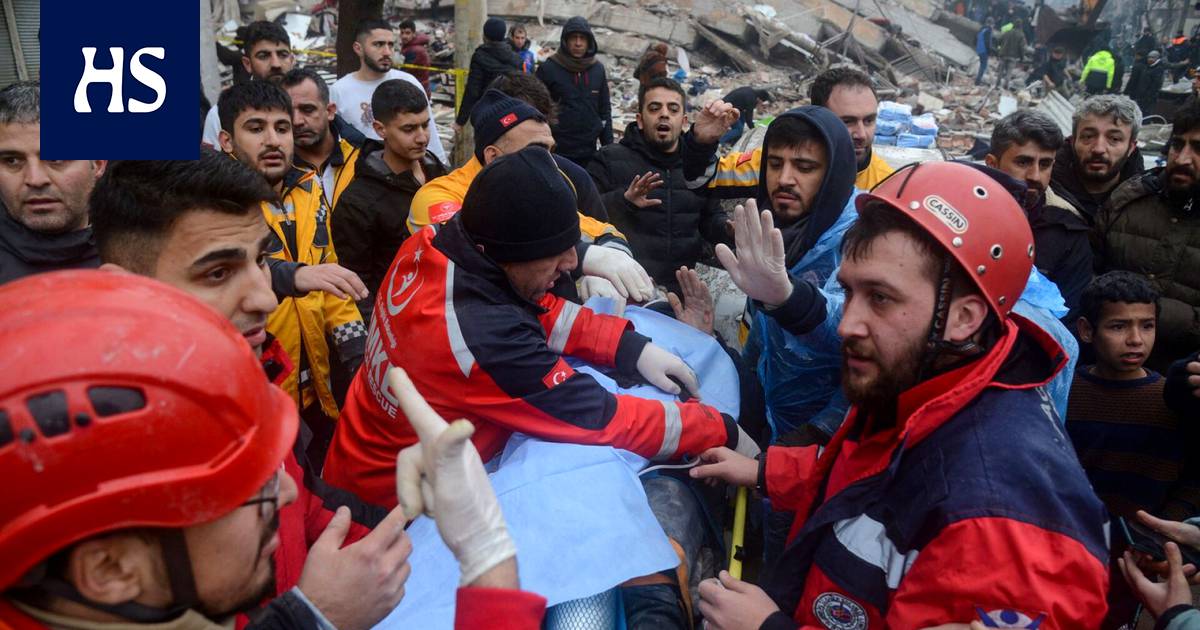Aid work repairing the damage caused by the earthquake is complicated by the fact that the area is politically fragmented and the area is controlled by several different entities.
in southeastern Turkey and a strong earthquake occurred in Syria early on Monday morning, which by early evening had already claimed more than 2,000 lives.
Buildings were reported to have collapsed in an area of more than 330 kilometers from the Syrian cities of Aleppo and Hama to Turkey’s Diyarbakir, the capital of Kurdistan.
The center of the earthquake was located about 33 kilometers from the city of Gaziantep, and its depth was measured to be just under 18 kilometers. In addition to Turkey and Syria, it was felt in Cyprus, Egypt, Israel, Palestine and Lebanon.
A tremor hit an area with several different authorities and where the situations in the different areas are very different from each other.
In addition to the Turkish and Syrian regimes In northern Syria, there are areas occupied by Turkey, where Syrian opposition forces exercise power in the name of Turkey, senior researcher at the Institute for Foreign Policy Toni Alaranta tells tells Organizing aid to the region can also be complicated.
“The administrative structure is officially in the name of the Syrians, but in practice Turkey makes all the decisions there – it’s like an extension of Turkey,” he says.
“So there are, as it were, three separate authorities”, the researcher sums up.
Read more: The death toll from the two earthquakes is growing rapidly, almost 1,500 dead in Turkey alone
Ministry of Foreign Affairs development policy adviser Niklas Saxen confirms that the area affected by the earthquake is large and includes very different areas.
“In Turkey and different [maanjäristyksen koskettamilla] there will be different things in the regions that will make aid challenging,” says Saxen.
The first thing to consider is political fragmentation, says Saxen. Every time humanitarian aid is delivered, there must be permission from the authority in control of the area to give the aid. For humanitarian organizations, security guarantees and access to areas are basic requirements.
The primary responsibility for providing aid naturally rests with the entities that control the area. In addition to the authorities, the Red Crescent is already doing aid work in Turkey, for example.
Correspondingly, the Syrian administration coordinates aid on its own side. On the other hand, a large part of the aid to northern Syria practically comes from the Turkish side or from the resources already on the ground, says Saxen.
“It goes without saying that it is significantly more challenging to operate in areas with active conflict and many different actors. It requires security, coordination and access to areas.”
Challenges can also be brought by weather conditions. For example, in northern Syria, the temperature can be close to freezing at night. People who have fled their homes need clothes, food and water. At the same time, they are offered health care, first aid and trauma care.
“If you look at the number of injured, it’s huge, all the hospitals are at full capacity and often the hospitals themselves could have been damaged or destroyed.”
The time window for finding people in, for example, the ruins of a building is relatively short, says Saxen.
“On top of that, there are logistical challenges,” Saxen continues. Earthquakes can destroy roads and bridges. Mountainous areas can be very challenging to get to and roads can be blocked by destroyed buildings and landslides.
“There is already emergency help to get the roads open and functioning. Logistics is a prerequisite for helping to get there.”
Read more: Erdoğan may be preparing a deadly strike on the Kurdish region of Rojava in Syria
In Diyarbakir, Turkey, a search was made for survivors in the ruins caused by the earthquake.
In Syria working in the Church’s foreign aid, tells HS that they are assisting the victims of the earthquake in northern Syria. The organization has a country office in Syria, and has done a lot of work with education in the region.
“We have a channel and access [alueille]. Our locations are Aleppo, Idlib and Hama, and we have agreements that we can operate in those areas”, executive director of the Church’s foreign aid Tomi Järvinen tells.
In the first phase of the aid work, the organization tries to provide the victims with clothing and protection against the cold.
According to Järvinen, after the first phase of aid, the aid will be aimed at making it possible for the children to continue going to school as quickly as possible.
“This kind of aid coordination, led by the ministries, works quite well there. Each organization works according to its own strengths.”
The organization’s office is in Damascus, but in addition to that, they have regional offices inside the country, which they are able to use even now in aid activities.
“We don’t need any special assistance corridors.”
An earthquake destruction can be found especially in poor areas of cities, where weak buildings have collapsed. In addition, electricity and water distribution are basic infrastructure that can be damaged in an earthquake. Fixing them as quickly as possible is of the utmost importance.
According to Saxen, according to preliminary data, the region of Turkey that has been affected the worst is, although he stresses that the situation is still alive. The area affected by the earthquake in Syria is also very large.
Toni Alaranta also reminds that the situation is alive and the number of victims is increasing. He predicts that aid work will not be easy.
“It has been snowing there and it is quite cold at the moment.”
Rescue workers on Monday in Hama, Syria.
#Natural #disasters #earthquake #hit #politically #complex #area #border #Turkey #Syria #aid #challenging #experts








